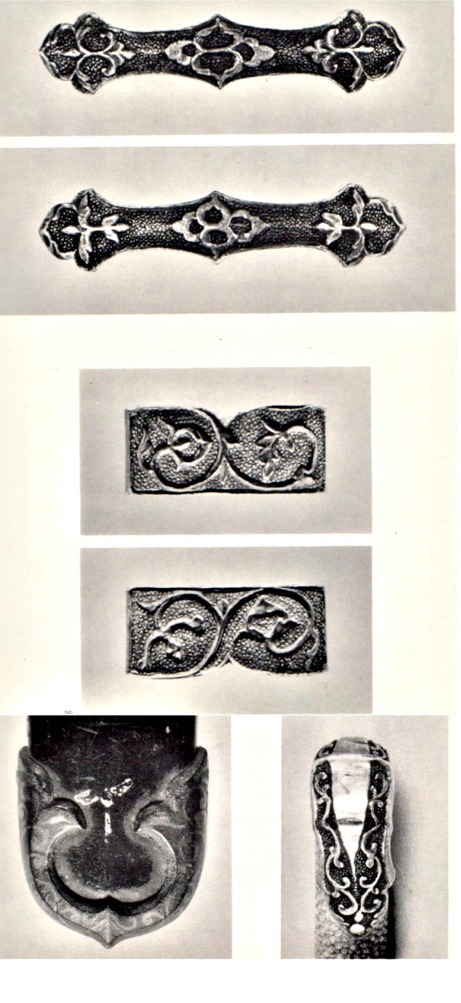|
2 Tang Dynasty (8th Century) Chinese swords in the Japanese Imperial Collection, in the Shosoin Depository at Nara, Japan
The handle of the first sword is wrapped in white rayskin. White rayskin was first used on Imperial Regulation swords in the the Han Dynasty;
its usage was transmitted to Japan where it was continuously used to this present day. The geometrical and repetitively flowing tendril pattern fittings are
actually silver filigree metalwork in the arabesque style. This arabesque-style ornamental motif was from the Arab world and was transmitted to
China in the Tang Dynasty where it became popular and was widely used.
Clear crystals and several pieces of blue, red and green glass adorn the filigree fittings. The scabbard is made of wood painted over with black lacquer
and are decorated with the patterns of birds, animals, and clouds, using gold dust applied in a technique known today in Japanese as the
"togidashi maki-e" technique.
In this technique, the design is painted in lacquer, and gold or silver powder is sprinkled over it. When the lacquer is dry, another coat is applied to the design
to fix the powder. Black lacquer without oil is then applied over the entire surface, and, after it has dried, it is then burnished briefly with charcoal, applying a
little water until the gold powder is faintly revealed. Following this process comes another process, known as the suri-urushi process, in which raw lacquer is applied
with cotton and wiped with crumpled rice paper; a finishing burnish is then done with charcoal. Next, granular charcoal is applied with water, and gentle polishing
is done using a soft cloth. Finally, suri-urushi and polishing are repeated three times.
|
|

Above: Details of the guard, tunkou (collar at the forte), pommel cap and the end-cap of
the scabbard. I believe the numerous flower patterns shown here are
actually representations of the lotus flower, a potent symbol of
Confucianist gentlemanly virtues.
|
|
|